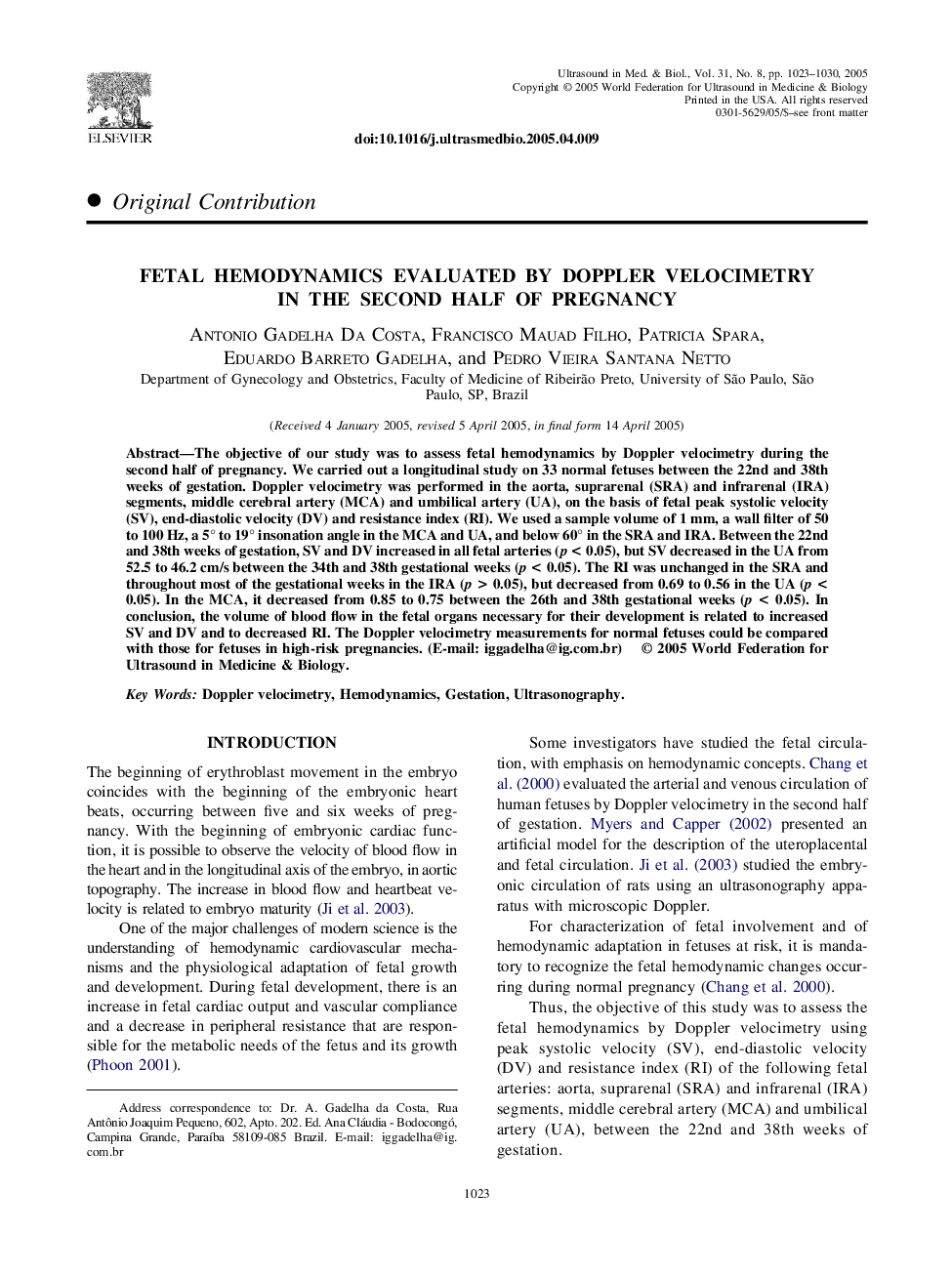| Article ID | Journal | Published Year | Pages | File Type |
|---|---|---|---|---|
| 10692953 | Ultrasound in Medicine & Biology | 2005 | 8 Pages |
Abstract
The objective of our study was to assess fetal hemodynamics by Doppler velocimetry during the second half of pregnancy. We carried out a longitudinal study on 33 normal fetuses between the 22nd and 38th weeks of gestation. Doppler velocimetry was performed in the aorta, suprarenal (SRA) and infrarenal (IRA) segments, middle cerebral artery (MCA) and umbilical artery (UA), on the basis of fetal peak systolic velocity (SV), end-diastolic velocity (DV) and resistance index (RI). We used a sample volume of 1 mm, a wall filter of 50 to 100 Hz, a 5° to 19° insonation angle in the MCA and UA, and below 60° in the SRA and IRA. Between the 22nd and 38th weeks of gestation, SV and DV increased in all fetal arteries (p < 0.05), but SV decreased in the UA from 52.5 to 46.2 cm/s between the 34th and 38th gestational weeks (p < 0.05). The RI was unchanged in the SRA and throughout most of the gestational weeks in the IRA (p > 0.05), but decreased from 0.69 to 0.56 in the UA (p < 0.05). In the MCA, it decreased from 0.85 to 0.75 between the 26th and 38th gestational weeks (p < 0.05). In conclusion, the volume of blood flow in the fetal organs necessary for their development is related to increased SV and DV and to decreased RI. The Doppler velocimetry measurements for normal fetuses could be compared with those for fetuses in high-risk pregnancies. (E-mail: iggadelha@ig.com.br)
Related Topics
Physical Sciences and Engineering
Physics and Astronomy
Acoustics and Ultrasonics
Authors
Antonio Gadelha Da Costa, Francisco Mauad Filho, Patricia Spara, Eduardo Barreto Gadelha, Pedro Vieira Santana Netto,
